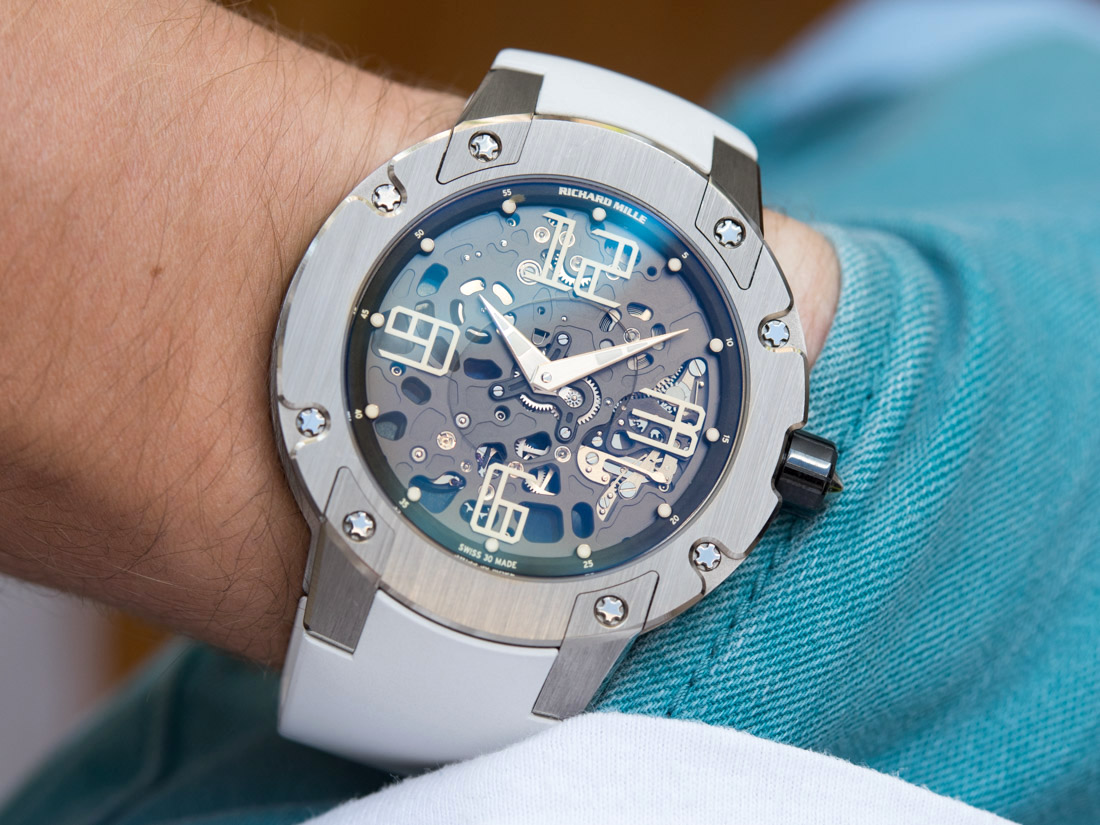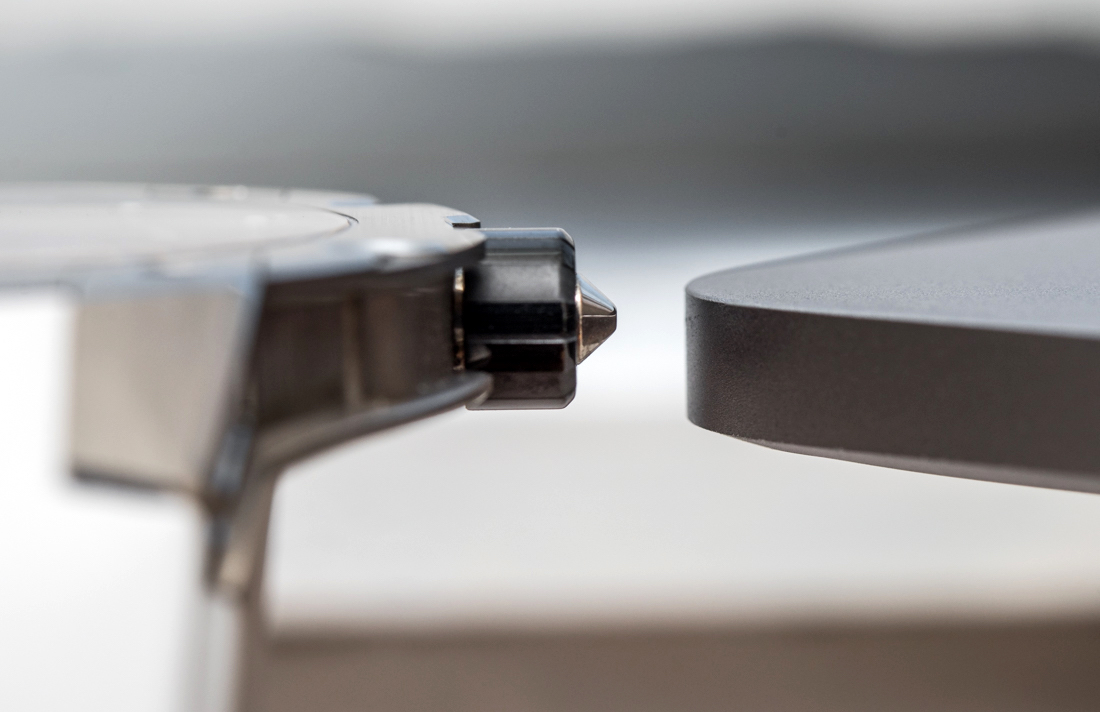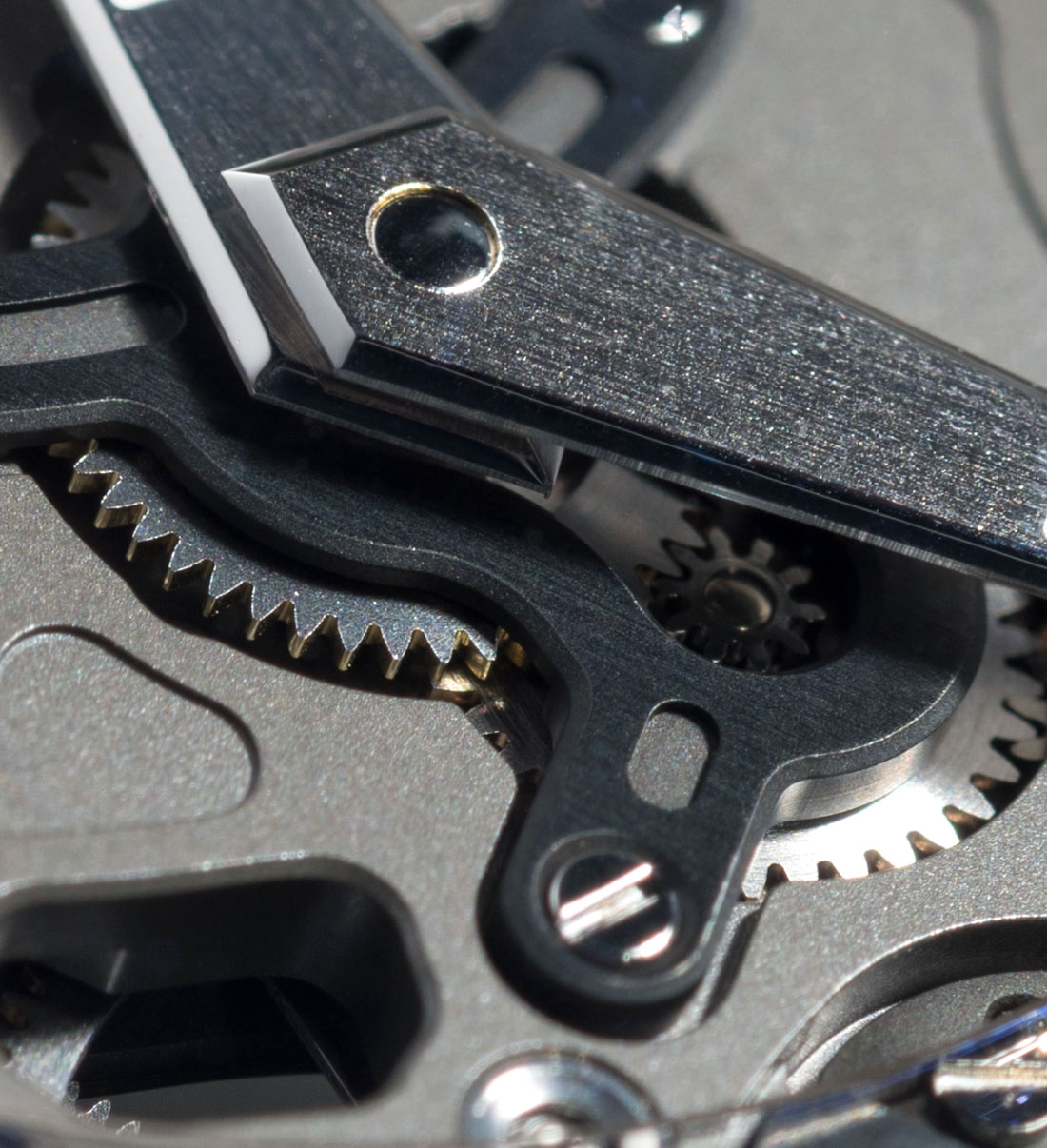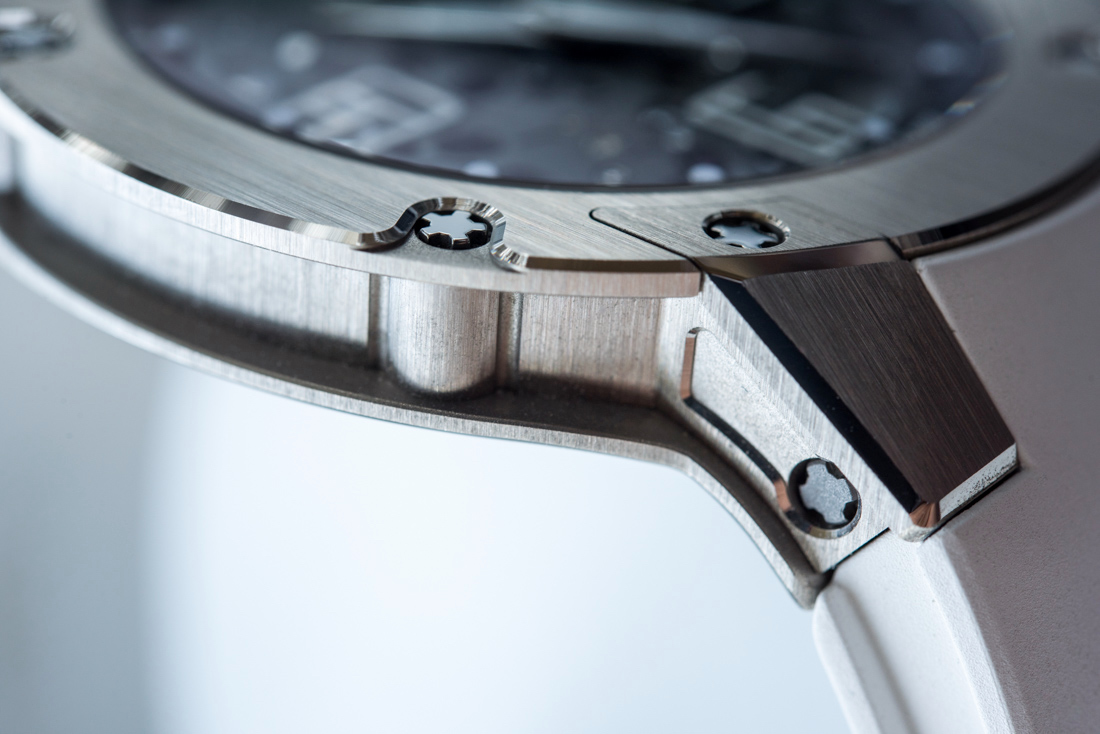
The five-prong torque screws of the bezel sit in their little valleys, surrounded by extremely accurately machined, beveled and polished curves – all eight of them. Four just hold the bezel, but one in each lug appears to fix the lugs to the case-band and case-back. The latter is one solid piece that includes the curve to go under the lugs, that is the traditional and highly ergonomic curved case profile that Richard Mille has on all its watches, no matter how thin.
The crown is massive and intricately crafted from unusual materials: the black bit is ceramic and the detailing is in a material that matches the case – here it has an 18k white gold spike. The ceramic even has alternating finishing which is something I have never seen done on such a small piece. Again, the price sure is stupendous, but I am yet to see a Richard Mille that did not have the widest array of such massive pain in the neck features. This crown must be so ridiculously difficult to source and get right that things like this will hardly ever be present on even mid-five figure watches – it just won’t be, because designers at the majority of other luxury brands don’t even dare think of stuff like this, and especially not with such regularity.

While functionality-wise the crown is solid as it should be, with double O-rings and a totally over-engineered clickyness to it, it took me a good while to get used to its looks – it just renders the whole watch more feminine in my eyes at least, though I’m sure it wouldn’t stand out this much if the watch was on a black strap (more on the strap in a bit).
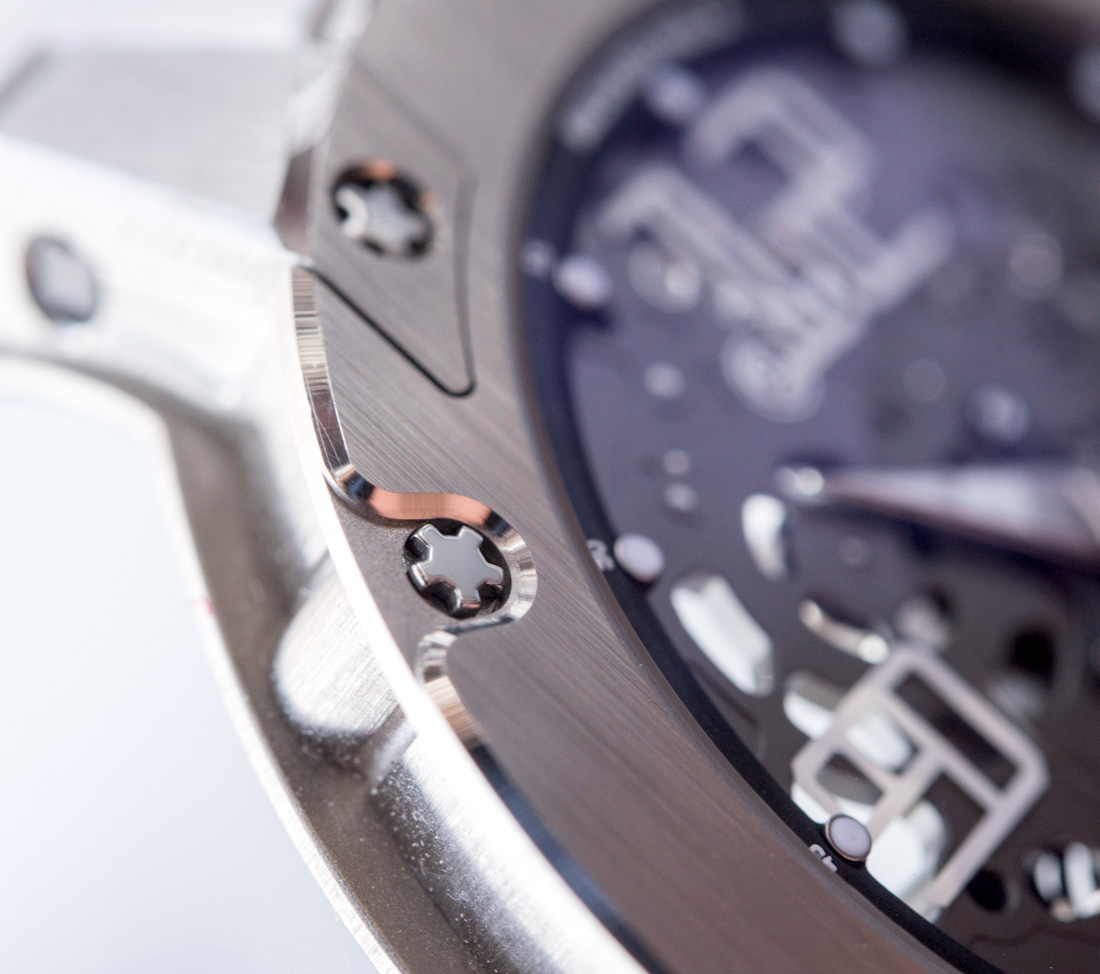
This noted, I can still appreciate it for what I mentioned above: to get this sort of detail in this quantity, you either go for a near six-figure watch or you’ll miss out. Having visited so many manufactures and handled so many expensive watches, it’s mind-numbingly complex and difficult-to-make details like this that are what really make a watch stand out from the rest. And if there’s anything I do appreciate in a Richard Mille watch, it’s that you can sort of get lost in it and expect to discover such details even weeks after wearing the watch.
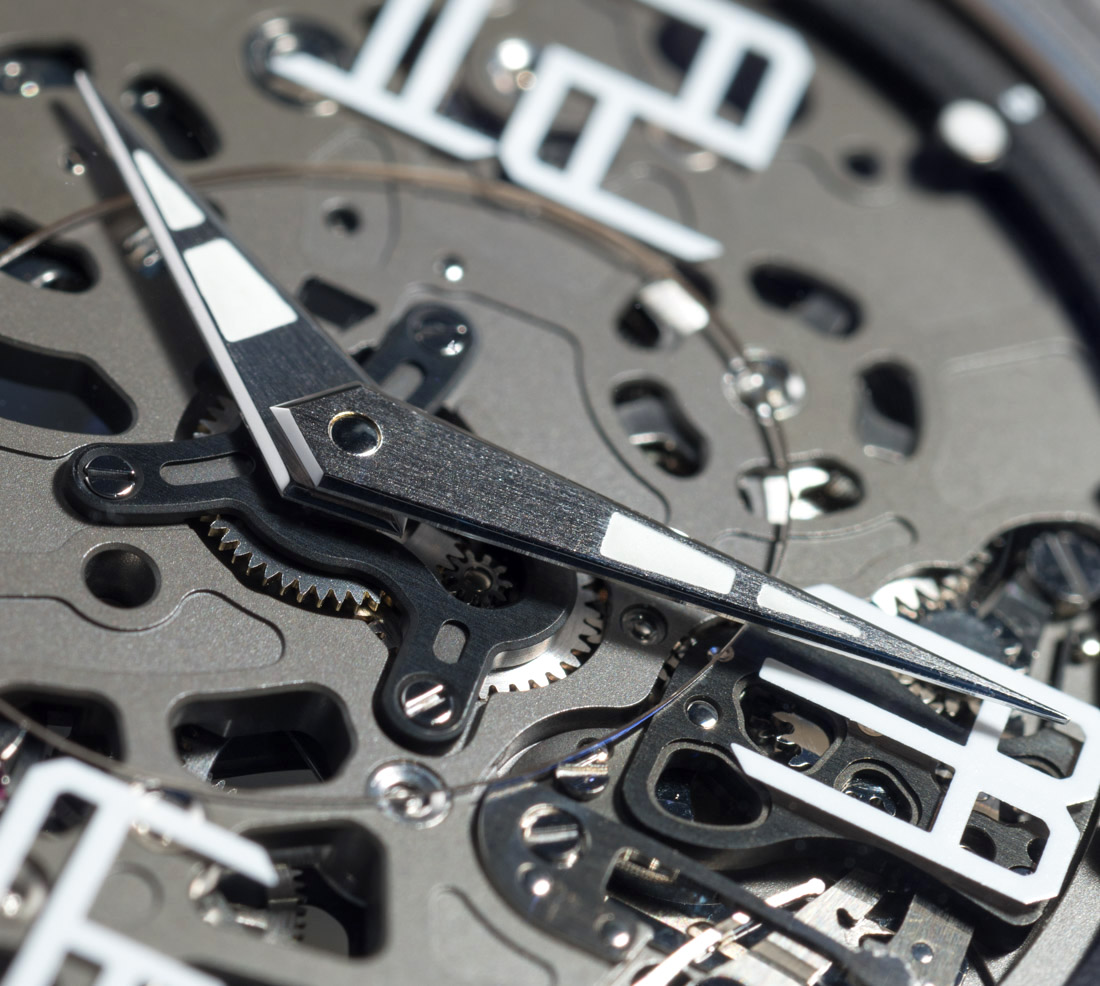
And I’m sorry, but a traditional watch with a traditional exterior has to have one absolutely amazing movement to justify a similar six-figure price – and again, a lot of collectors who today are buying (and wearing) Richard Milles do so because a new dial on a 5270 often just isn’t exciting enough when on other watches everywhere you look, you see detailing that will never be present on proudly traditional watches. Before you light your torches and bring out your pitchforks, I am not saying one is superior to the other, or one shouldn’t exist and the other should, but rather that beyond the show-off element, there is another reason why Richard Mille watches (and others, like an MB&F Legacy Machine Perpetual or Urwerk UR-110, et cetera) do so well at a time when others struggle.
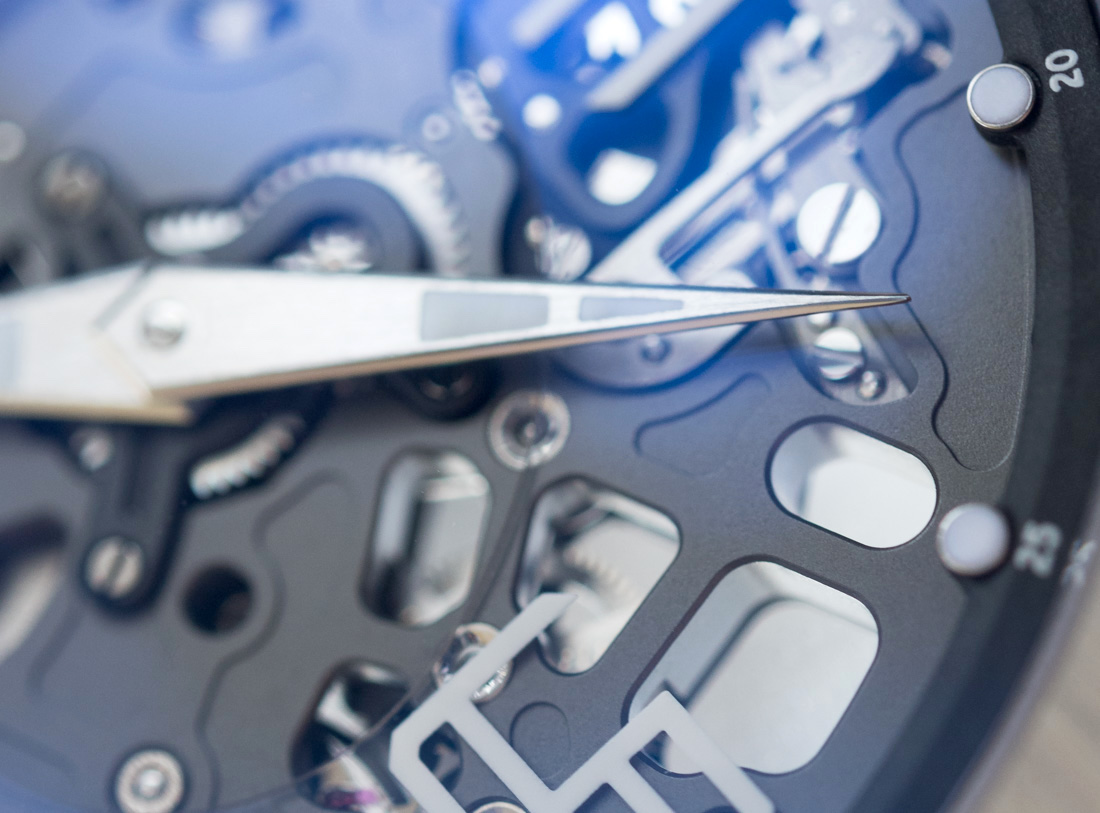
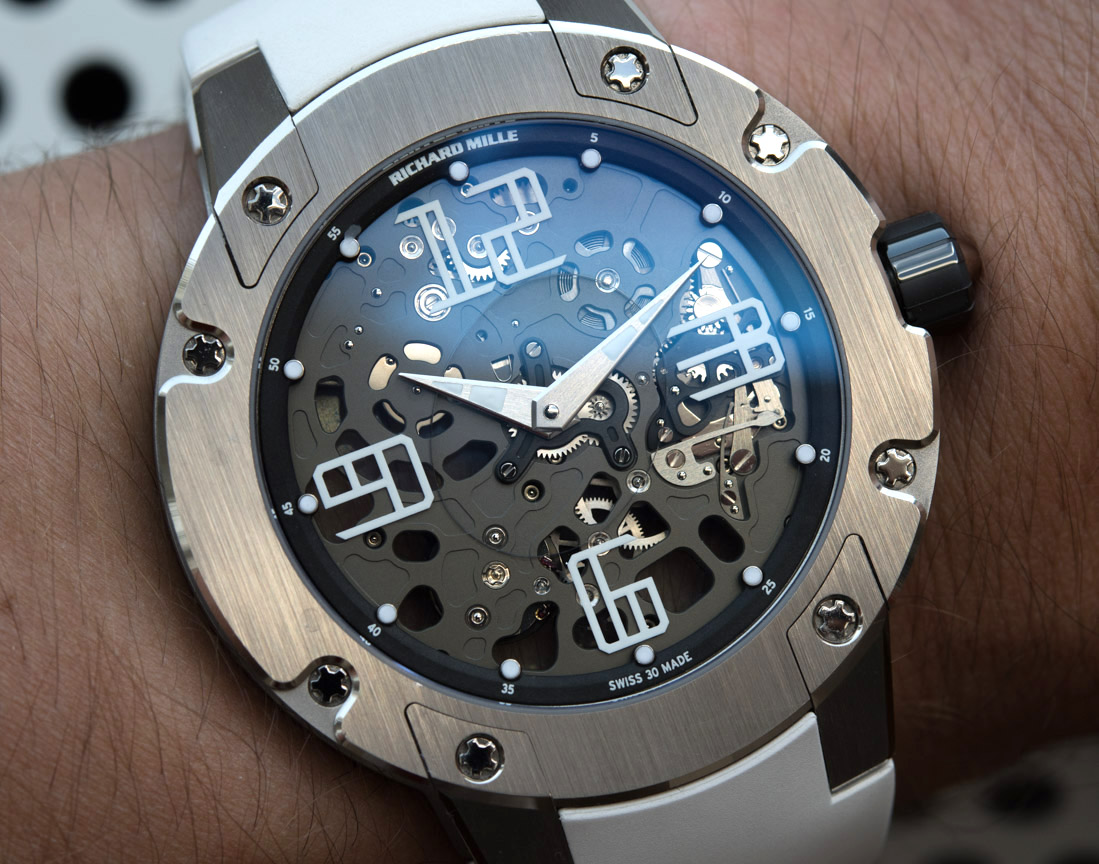
What leaves room for criticism concerning the case itself is the fact that 18k white gold scratches if you look at it the wrong way – things harder than white gold include melting ice, or the Queen’s royal selection of feather pillows. The titanium option won’t be that much better, but will certainly offer an improvement in this regard, at a cost of lost sheen that only precious metals can produce. Water resistance, despite the double-O ring crown is rated for 30m. I keep saying all modern watches should have at least 100m depth rating, though the way things are going, 30-50m appears to become the norm among non-dive watches.
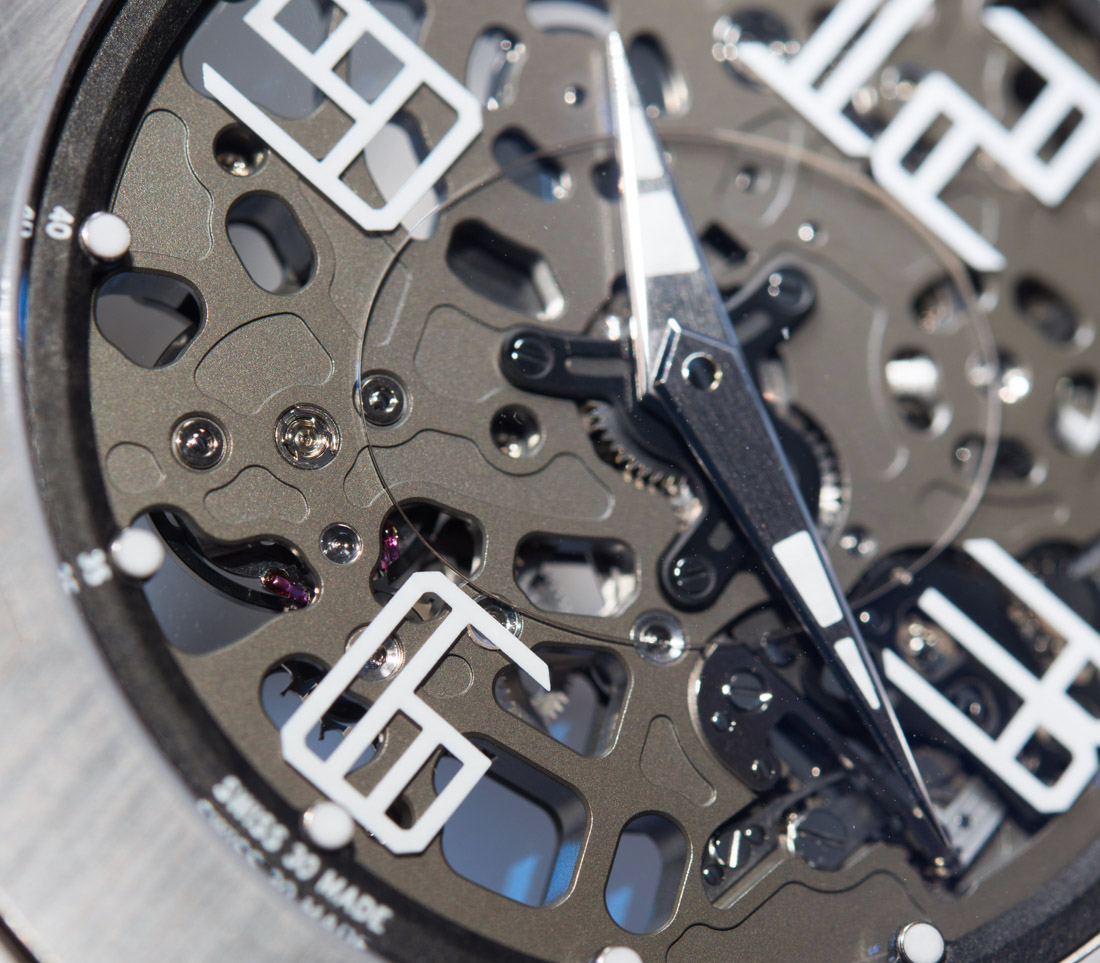
Legibility
Depending on the angle of view, I go from finding the hands perfect to wishing they had 15-20% more surface area. The hands are thick, three-dimensional objects and although they are on the smaller side, I am sure they are fairly heavy – and micro-rotor movements are rarely big on torque and hence rarely fitted with massive hands.
The counter-argument is that this is as much a showpiece as it is a watch and because it is still very legible, they decided to leave a bit more room for the eyes to see the complex movement and not cover more of it up with even larger hands.
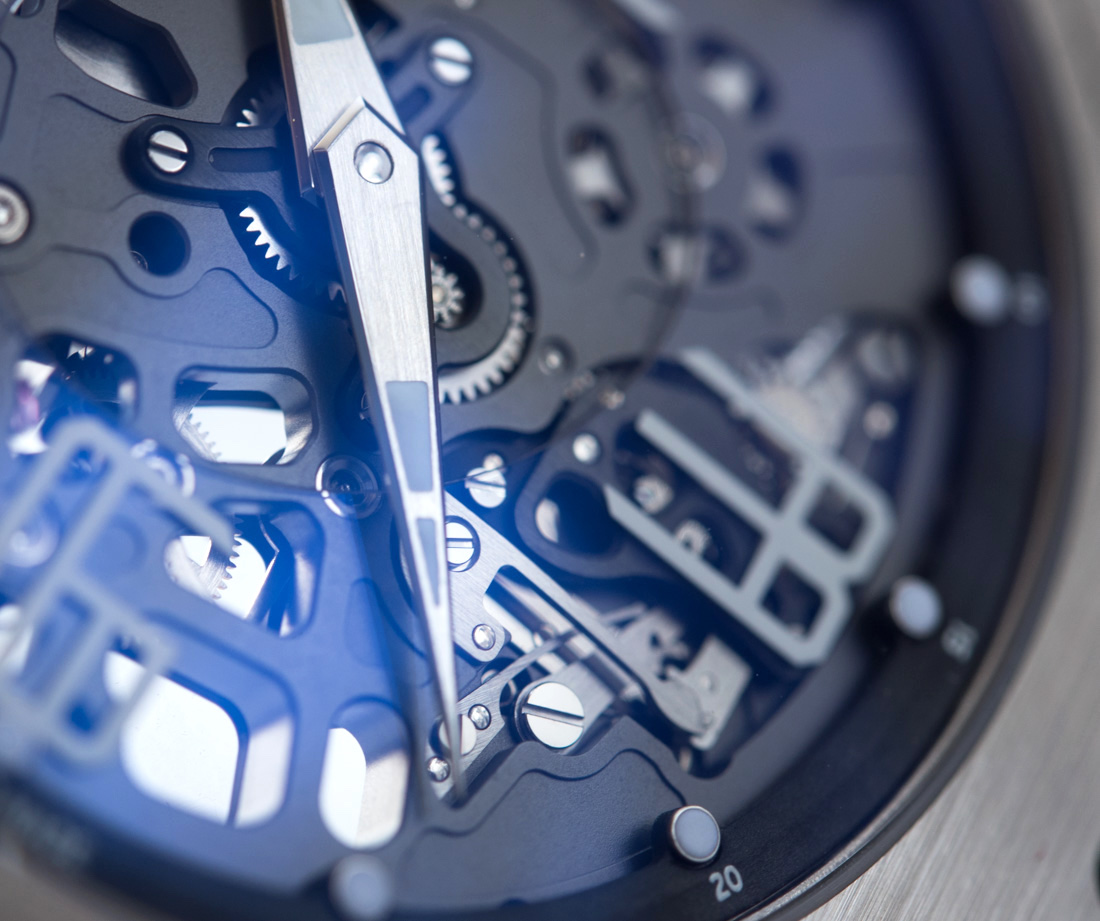
Over the last few weeks that I spent wearing the Richard Mille RM033 a lot, I recall two occasions when I was confused and had to look twice to tell the hands apart; the way they stood on the dial and how the lights played, I wasn’t quite sure which one was which. Apart from these two highly memorable moments of my life, I found legibility to be great.
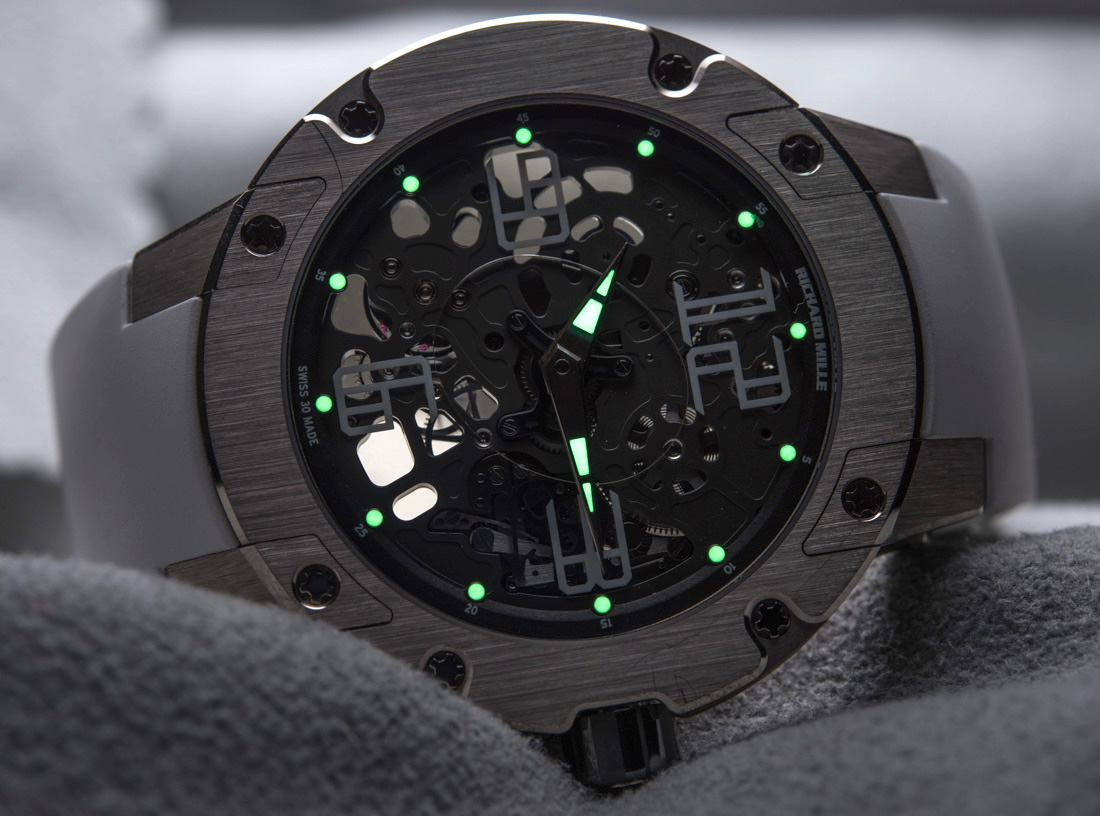
Luminescent material has been applied to the small white pips around the periphery of the dial as well as the hands, but not the Roman numerals – being the ABTW in-house lume addict that I am, I was sort of bummed to not see those cool-looking numerals light up, but I presume the thicker luminescent paint just didn’t fit into this ultra thin sandwich of a watch. Nevertheless, those little pips do a great job working together visually with the super sharp ends of the hands. I believe there is or was another version of the RM033 with a running seconds exactly above the 6 o’clock position, but I actually enjoyed not having to bother with that – and even without it the dial side of the RM033 offers plenty of eye candy.
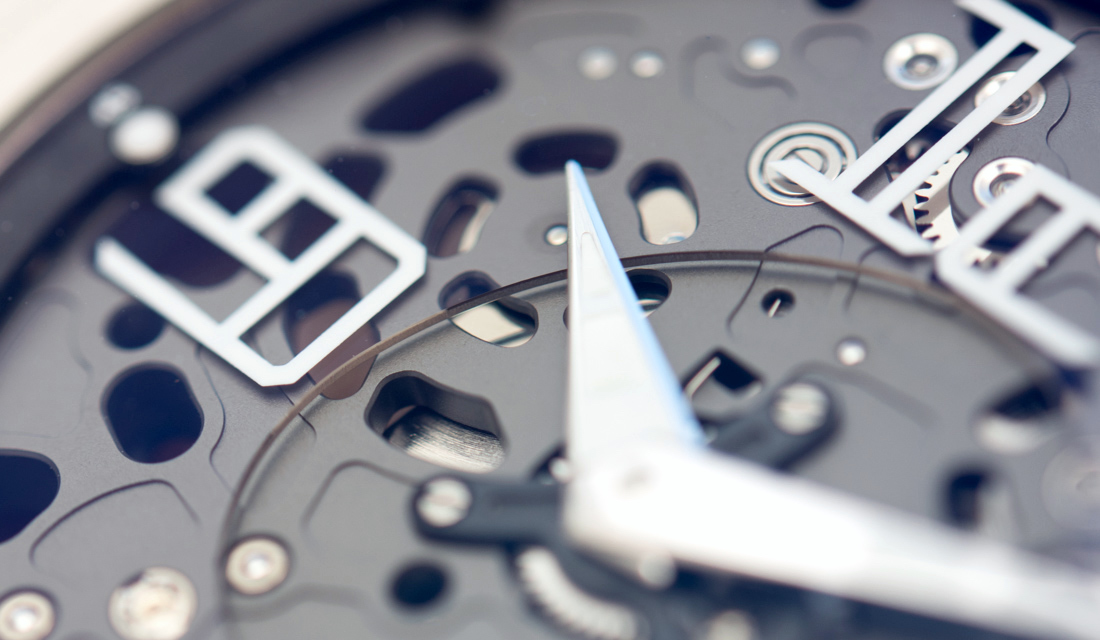
What’s interesting is that under the front sapphire crystal there is another pane of sapphire that is just 0.30mm (!) thick, sitting right between the movement and the main hands. This disc has an oval-shaped cutout in its center that is fun to see when the light hits it just the right way, and it is this crystal that appears to carry those big indices. I wish Richard Mille would stop using this weird anti-reflection coating on these dial-crystals that keep casting a strong blue-purple hue when light meets it the right way – the blueish tint never shows up on the front crystal, but the one inside the case.
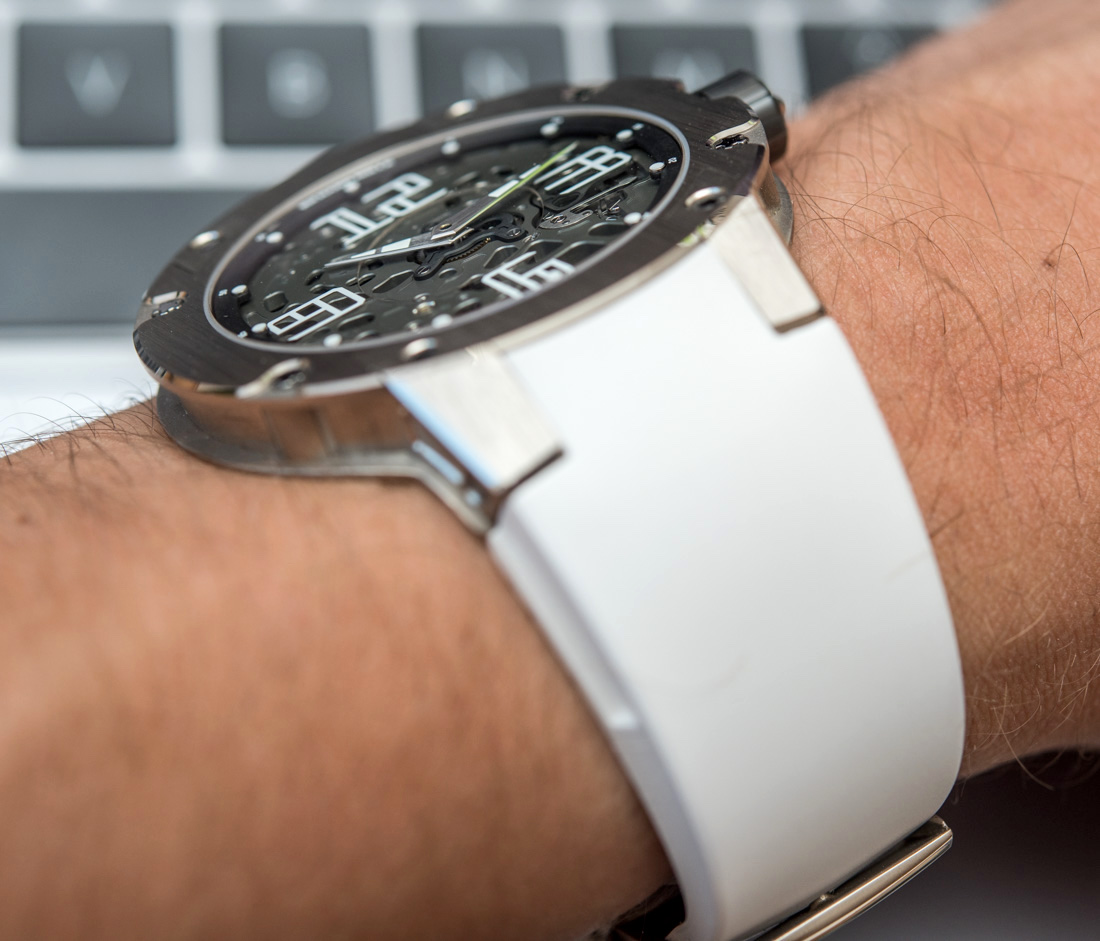
Richard Mille actually provides some interesting specifications that I don’t recall ever seeing elsewhere, not even with other ultra-thin watches. The case as we said is 6.30mm thick, but the movement is just 2.60mm of that. Richard Mille says that the front sapphire crystal is 1.00mm thick throughout, while the case-back is 1.00mm at the center and 1.53mm thick at its outer edges. All three crystals have anti-glare treatment on all of their sides.
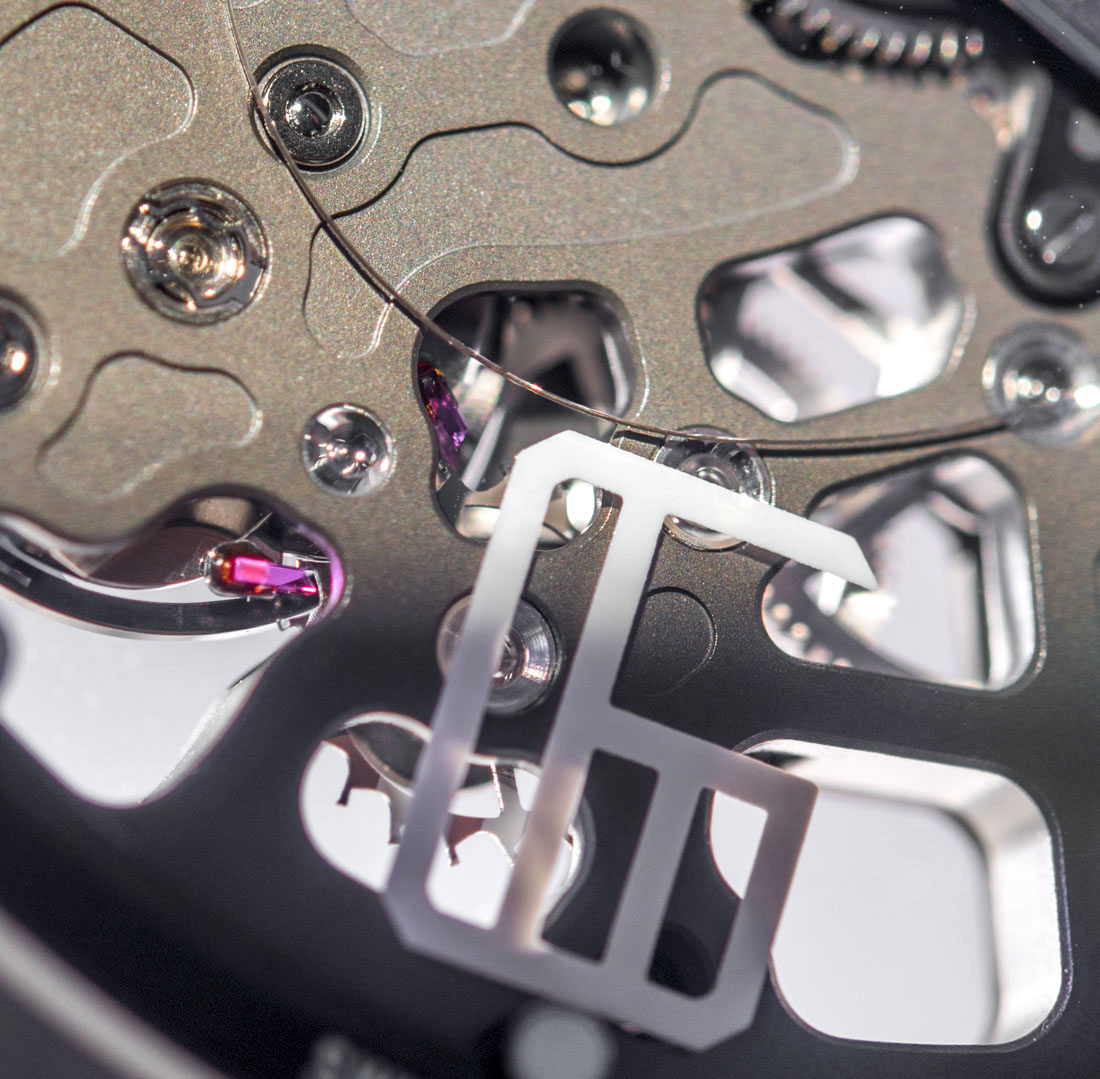
Measured in the center, then, we know that the movement and the three crystals make up for 4.9mm of the thickness of the watch, leaving just 1.4mm of space for the pinion of the hands and the two stacked main hands to work with – and yet we expect (and see) the hands to appear three-dimensional and even be lumed on their center. The RM033 is not trying to be the thinnest watch out there – but even as it is, that 1.4mm space I find something cool to think about.
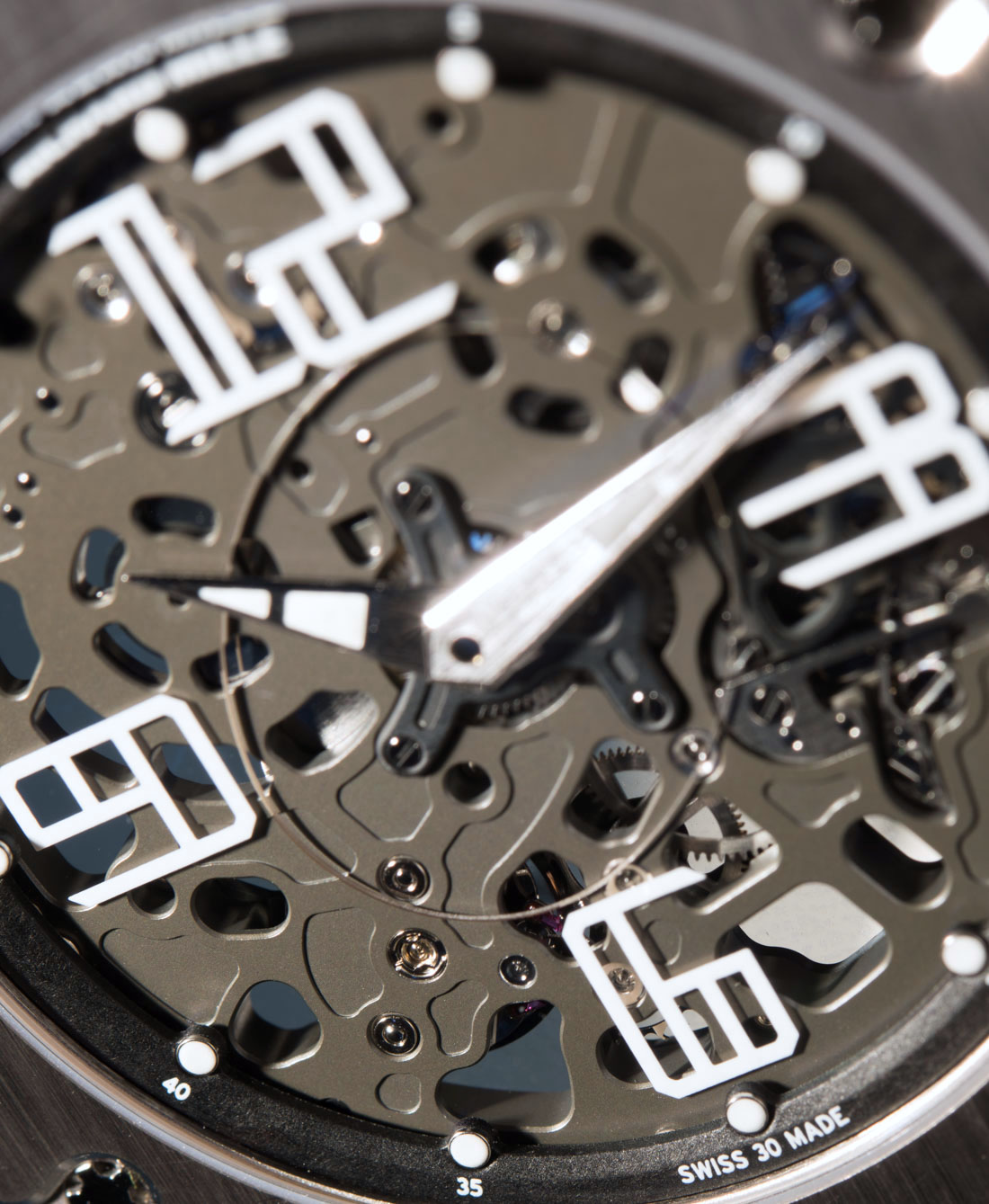
The Titalyt surface treatment of the movement (that practically also serves as the dial) looks either dark grey or this dark military green closely reminiscent of the colors of tanks and the like. I found this color choice really cool, but to each their own, we are talking aesthetics here; though the contrast between it and the silver sheen of other parts and the hands is just great, no matter the lighting conditions.

